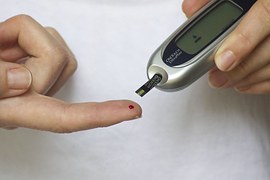Your gut health can determine how healthy your heart is!
Butyrate is a fatty acid that’s important for protecting the gut from inflammatory and autoimmune diseases like Crohn’s, ulcerative colitis and colon cancer. It’s the most important source of energy for endothelial cell – the cells lining your blood vessels. It’s a type of short chain fatty acid (SCFA) and has also been shown to prevent infiltration of immune cells from the bloodstream into fat tissue.
Butyrate is super important for health and nutrition practitioners to focus on with patients and clients, especially when working with people who are suffering from autoimmune issues and struggling to maintain optimal weight.
A healthy microbiome is critical to healthy levels of butyrate. Gut bugs make butyrate by fermenting certain types of fiber.
According to research posted in the Endocrinology section of the Nature Review, people with type 1 Diabetes are deficient in butyrate-producing bacteria in their gut plus butyrate improves insulin sensitivity.
So it’s clear that butyrate is linked to gut health, protection from cancer, autoimmune disease, obesity, and diabetes.
So, how can we optimize butyrate levels, in our clients and in ourselves?
Butyrate contributes to a healthy, happy microbiome and thus a healthy, happy gut. Gut health is related to whole body health. Thus balancing butyrate can lead to world peace because it leads to happy, healthy people. And healthy happy people don’t fight.
So, here are 4 things you can do to optimize butyrate levels:
1- Use oral butyrate supplements – A recent study in Alimentary pharmacology and therapeutics found that 4 grams per day for 8 weeks improved symptoms of Crohn’s Disease.
2- Eat butyrate containing foods – The highest concentration of butyrate is found in butter and other dairy products.
3- Balance gut flora – Ensure the flora which produce the SCFAs, in particular butyrate, are the dominant ones.
4- Eat the fiber that butyrate love – Particularly powerful is resistant starch, found in seeds, legumes, whole grains, cold potatoes, unripe bananas, and just about any vegetable. Of course the diet needs to be customized to the person, and not all forms of resistant starch will be indicated based on other factors such as glycemic control, presence of bacteria in small intestine (SIBO) and food sensitivities.
Food is always key.
Adapted from Dr. Ritamarie Loscalzo

